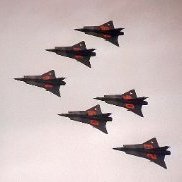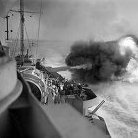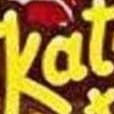From my limited documentary sources, the Admiralty seem to have been experimenting with submarine camouflage from 1938.
According to Confidential Book 03016/39 'Progress in Tactics' 1939 ed., trials in 1938 had confirmed that blue paint produced the best result in the Mediterranean and that International Black produced the least 'aura'.
As part of an exercise, some submarines were painted olive green with a matt finish and although olive green had been proved to be the most suitable colour for operations off Singapore during January and February, it was thought that this may not be the best for later in the year. This was being investigated.
After this, the next document I have that mentions green being used for the camouflage of submarines is Confidential Admiralty Fleet Order 2269/44 'Camouflage of H.M. Ships and Vessels - Standardisation' dated 12 October 1944. Under the heading 'Scheme J' Submarines on Foreign Stations could be painted as follows.
"Paint black or very dark blue, grey or green at the discretion of Captain (S)."
This can be found in subsequent Orders untill the end of the war.
I have not seen a Standard of the shade(s) of green used for this purpose.
Given that the green finish appears in CAFOs, it would seem that it was an official Admiralty scheme, but there seems to be no indication of its hue. Presumably there would have been a formula published for it somewhere at some time, possibly only locally on China Station and or later within the Eastern Fleet that has not yet come to light. The Navy had a disposition to mix its own paints as can be seen by various AFO and CAFOs, so the formula for PB.10 included in CAFO 2269/44 might hold good for the olive green colour but using different pigments.
The RAF colour Dark Green that was an olive green hue was originally made using Yellow Ochre, Ultramarine Blue, Lithopone, a white pigment and Black.These pigments, or something like them can be found in the 1938 Rate Book of Naval Stores under the heading 'Pastes for Paints' where Admiralty Pattern 52P, Ochre AP 8P Blue, ultramarine, AP 110c Black and AP 104 Zinc Oxide, White are listed, the latter two materials being quoted as constituents of PB.10 in CAFO 2269/44 while the Black was used in a number of camouflage colours in use during 1944 such as A1.G5 also quoted in CAFO 2269/44. To make an olive green, it would presumably have been a case of working out the proportions of the Ochre, Ultramarine Blue, Black and White that gave the desired colour.
If we go down the SCC avenue with regard to the hue of the olive green colour, a better suggestion might be SCC No.13. This was included in the original 1939 SCC range and is said to have been used in India by the British Army as an overall finish on various types of vehicle. It has been claimed to have been referred to colloquially as either 'jungle green' or 'dark green'. It was retained in BS 987C of 1942 and the Standard for this colour I have seen looked to my eye to be something like FS 34086, but was a bit darker. This might possibly be described as 'olive green', 'dark olive colour', 'slime green' or 'dark green'. It also has the virtue of having existed from at least 1939 when RN Submarines in the Far East are first described as being a shade of green.
At the risk of initiating thread drift, the only mention I have come across of the Royal Navy using SCC colours to paint warships is related to a number of MTBs that were used along the Norwegian coast during what are described as 'lurking operations' from 1943 until the end of the war. Here the intention was to help conceal the vessels from aerial and surface observation whilst lying against the rocky shore of the fiords in wait for passing targets. The colours used originally were SCC 1A (a dark brown), 7 (a green) and 14 (black); but this was subsequently modified by dispensing with the black and introducing SCC 4 (a light brown) and 5 (described as being "Stone Colour", a lighter shade of brown). This scheme was introduced at the request of the Admiral commanding Orkneys & Shetlands during 1943 and to the best of my knowledge, never appeared in AFOs or CAFOs. I have no idea what the technical specification of the paint used for this purpose was.













.thumb.jpg.2c282efcc138b7cf7f1e1586a9c534d2.jpg)


